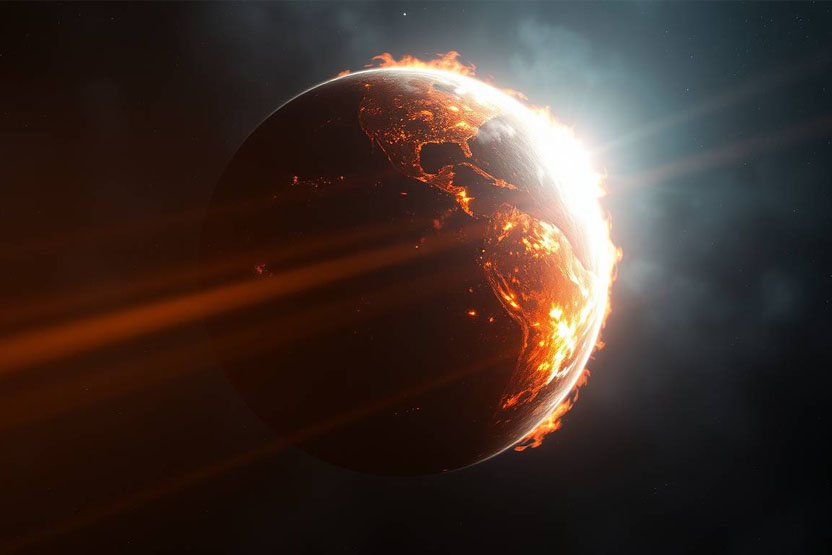Solar radiation, electromagnetic fields, and global warming will eventually bring life on Earth to an end

A new NASA study suggests that life on Earth will ultimately end as a result of an unprecedented wave of global warming, making the planet increasingly uninhabitable. Scientists have identified the year when all forms of life on Earth will disappear—though this date lies far in the future, the early signs are already emerging.
Researchers from NASA, in collaboration with Japan’s Tohoku University, used advanced supercomputers to calculate the estimated timeline for the end of life on Earth. By using sophisticated mathematical models and computer simulations, the scientists examined how the Sun’s expansion would affect our planet’s atmosphere and how it would lead to unsustainable rises in global temperatures.
The study was partly based on the solar storm that occurred in May—the most intense in over two decades. The event caused significant changes in Earth’s atmosphere and served as a warning sign of what may lie ahead.
According to the findings, life on Earth is expected to end in the year 1,000,002,021—about one billion years from now. However, the researchers warn that the planet will become increasingly hostile to human life much earlier than that. Due to climate change, living conditions will deteriorate progressively, making survival more difficult long before life disappears entirely.
The study explains that the Sun, which has been burning for millions of years, will ultimately be the cause of Earth’s demise. As it progresses through its life cycle, the Sun’s energy output will increase, eventually heating the solar system at an accelerating rate.
Earth will not be spared from this growing solar activity. The extreme heat will make surface conditions so harsh that even the hardiest life forms will be unable to survive.
Researchers note that symptoms of this transition are already appearing. The rise in coronal mass ejections, solar flares, and sunspots in recent months is evidence that Earth is entering a transformational phase. Coronal mass ejections (CMEs) occur when the Sun releases massive amounts of material, magnetic fields, and electromagnetic radiation into space—sometimes affecting areas beyond our solar system.
As the Sun’s temperature rises, Earth will suffer from reduced oxygen levels, increased surface temperatures, and deteriorating air quality. This will trigger an irreversible, gradual transformation of the planet’s atmosphere and ecosystems.
Climate change caused by human activity will accelerate this process. Global temperatures continue to rise year after year. Ice sheets are collapsing, glaciers are melting, and sea levels are climbing rapidly.
Although one billion years may seem like a distant future, experts are already working to find solutions to save the planet. Some scientists are hopeful about mitigation, while others believe Earth cannot be saved and are looking toward the possibility of establishing human colonies on other planets, such as Mars.
Nevertheless, researchers emphasize that the end of life on Earth won’t be sudden—it will unfold gradually in a slow, irreversible decline. Environmental and climatic conditions could become severely difficult long before the one-billion-year mark.
International organizations are striving to save the planet by tackling the root causes of global warming. Yet, despite these efforts, results have been limited. Last year, Earth’s temperature exceeded 1.5°C above pre-industrial levels, highlighting the urgency of the climate crisis.


Comment